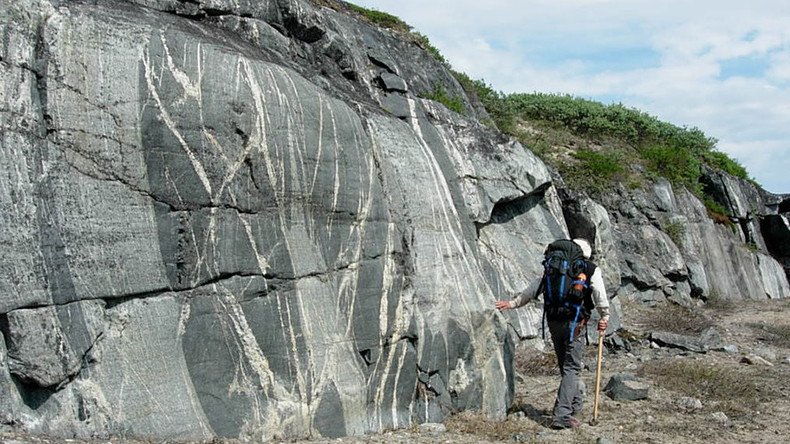4.2bn-year-old remnants of Earth’s original crust found in Canada (PHOTO)

A team of US and Canadian researchers has found traces of Earth's original crust dating back at least 4.2 billion years which could help explain a huge gap in our planet’s geological evolution.
The Earth’s crust is a 10-40km (6-25 miles) deep solid layer which sits on top of the viscous mantle and molten core. The current crust – on which all of our cities, countries, continents and oceans rest – isn't the planet's first.
Billions of years ago, when Earth was in its infancy, a more ancient crust covered the planet. That crust melted back into the planet’s interior long ago due to plate tectonics, or was transformed into new rocks.
The oldest portions of the current crust have been dated as 2.7 billion years old. Given that scientists believe the Earth is more than 4.5 billion years old, this leaves a huge gap between the birth of the planet and the formation of its cover.
“The Earth is always ‘recycling’ and re-melting its crust, erasing records of its early beginnings." https://t.co/vjS9T8n2wvpic.twitter.com/1D9Xcb4u8G
— uOttawa (@uOttawa) March 17, 2017
However, a team of researchers from the University of Ottawa and the Carnegie Institution in Washington, DC who were working in northern Quebec have found evidence of an even older crust dating back at least 4.2 billion years.
“The Earth is always ‘recycling’ and re-melting its crust, erasing records of its early beginnings”, explains Jonathan O’Neil of the University of Ottawa.
READ MORE: Native American tribe may have been wiped out by asteroid – study
“Finding remnants of this ancient crust has proven difficult, but a new approach offers the ability to detect the presence of truly ancient crust that has been reworked into ‘merely’ really old rocks,” O’Neill’s colleague Richard Carlson of Carnegie said in a statement on the findings.
There is much about Earth’s ancient crust that scientists don’t understand because most of the planet’s original crust simply isn’t around any longer to be examined.
O’Neill and Carlson studied 2.7 billion-year-old rocks which make up a good portion of the eastern shore of Hudson Bay. To date the rock, the researchers measured an isotope called neodymium-142 which was produced only within the Earth's first 500 million years.
Remnants of Earth’s Original Crust Found in Canada https://t.co/i4o8YqVm1w via @novapbs
— Carnegie Science (@carnegiescience) March 17, 2017
The findings, published in the journal Science, provide vital information to understand how the first continents were built. The study also suggests that the ancient crust survived for nearly 1.5 billion years before being recycled.
The paper doesn’t provide conclusive answers for how the crust formed, but the researchers says it does provide new insight. "It gives us more tools to understand the early geodynamics," O'Neil said. "Was [the process] the same everywhere on Earth? Or was it local? These are all questions we'll have to answer.”












